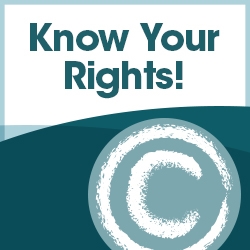News Sites May Have Infringed Photographer’s Copyright By Embedding Tweet
News Sites May Have Infringed Photographer’s Copyright By Embedding Tweet
by
Wendy Davis @wendyndavis, February 16, 2018
In a move that could force news organizations to revise longstanding practices, a federal judge has ruled that Time, Gannett, Breitbart and other news organizations may have infringed a photographer’s copyright by embedding a Twitter post into news articles.
The decision, issued Thursday by U.S. District Court Judge Katherine Forrest in New York, centered on a photo of New England Patriots quarterback Tom Brady taken in July 2016 by photographer Justin Goldman.

Goldman uploaded the picture to Snapchat, following which other users posted the photo to Twitter. After the photo appeared on Twitter, news sites operated by Time, Gannett, Breitbart, Yahoo and other companies embedded the Tweet in articles. Goldman sued the news companies last year, arguing that they infringed his copyright by displaying the image on their sites. He said in court papers that he never expected the photo — posted to Snapchat as a “My Story” — to be viewed by more than the approximately 90 people he had authorized to see those types of posts.
The news organizations asked Forrest to dismiss the lawsuit. They argued that they didn’t “display” Goldman’s photo for purposes of copyright law, because the embedded tweets were hosted on Twitter’s servers.
“The embedded tweet and the accompanying photo were not stored on, hosted by, or transmitted from servers owned or controlled by the defendants,” they argued in a motion seeking summary judgment. “Instead, for each of the articles that included an embedded tweet, the Photo that was part of that the tweets were hosted on Twitter’s servers.”
Time and the other companies pointed to an 11-year-old decision by the 9th Circuit Court of Appeals in a matter pitting adult entertainment company Perfect 10 against Google. In that case, the appellate court ruled that Google’s search engine didn’t infringe copyright by creating “in-line” links to outside pages that contained unlicensed photos. Those in-line links allowed users to view the photos without leaving Google, but the images themselves remained on outside companies’ servers. The decision in that case hinged on the fact that the infringing images were not stored on Google’s servers.
Forrest rejected the news companies’ argument — characterized in court papers as the “server test.” She wrote that there was “no basis for a rule that allows the physical location or possession of an image to determine who may or may not have ‘displayed’ a work within the meaning of the Copyright Act.”
The litigation drew the attention of outside groups, including the Electronic Frontier Foundation and Public Knowledge — which sided with the news organizations — and Getty Images and other photographers’ organizations — which sided with the photographer.
The digital rights groups argued that the server test — or the principle that, for purposes of copyright liability, companies don’t “display” images that aren’t hosted on their servers — is now “a legal cornerstone of Internet communication.”
“The server test’s limit on direct liability for linking encourages users and platforms to create interesting and informed content that contains links to other sites, leading to a better-informed and more diverse public sphere,” the groups write. “Online advertisers of all kinds, including political campaigns, can embed links to images and related information. And libraries, educators and social agencies can use links to educate, inform and empower their users.”
But Getty contended that the “server test” harms photographers by making websites less likely to pay for images.
“If an ordinary viewer would construe the work as displayed by the website publisher, then it makes no difference that the image may be technically (and invisibly to the viewer) hosted elsewhere,” Getty argued. “By allowing website publishers to pull into their own websites images from other websites that have incurred the costs of licensing and hosting those images, the server test would eliminate any incentives for websites to pay such costs going forward.”
Santa Clara University law professor Eric Goldman says Forrest’s opinion “creates a shadow of doubt” over many current practices.
He tells MediaPost that until Forrest’s opinion came out, people commonly thought that inline linking wasn’t a public display of a copyrighted work, and therefore didn’t create the risk of liability. The new ruling “stirred the pot unnecessarily — and we’re going to all pay the consequences of that,” he says.
Forrest’s ruling doesn’t end the lawsuit. She also said that the news sites could still prevail under a variety of theories.
“In this case, there are genuine questions about whether plaintiff effectively released his image into the public domain when he posted it to his Snapchat account,” she wrote. She added that the news sites might also have other defenses, including an argument that they made fair use of the image.
MediaPost.com: Search Marketing Daily
(31)

